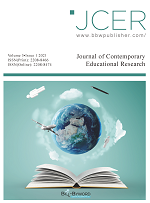Comparison Between Chinese and American Elementary Education Through the Lens of Gender
Abstract
In the era of knowledge economy, education determines the competition of a nation. The United States is famous for its quality education around the world. However, in modern times, new challenges have emerged, especially in K-12 education. Although China highly emphasizes on education, due to its limitation of history and development, there are still many problems that need to be solved. Through the comparison of Chinese and American elementary education, the educational strategy can be refined based on different cultural contexts. It is particularly important to stress on gender issues in elementary education in terms of sociological value. The intangible gender bias still exists in other forms. In other words, it is crucial to create a learning environment with gender equality as a response to current gender issues. This study is mainly carried out by reviewing literatures, and the paper is divided into five parts. With a brief introduction of elementary education and gender consideration, this study compares the Chinese and American elementary education system and gender impact. Then, two research results, as a quantitative data, are discussed in this paper, reflecting how gender stereotypes influence elementary education.
References
Sadker M, Sadker D, 1994, Through the Back Door: The History of Women’s Education in Failing at Fairness: How Our Schools Cheat Girls, Simon and Shuster, New York, 3.
Calvanese MM, 2007, Investigating Gender Stereotypes in Elementary Education. Journal of Undergraduate Psychological Research, 2: 11-18.
Chan AS, Choi M-K, Salmon DP, 2001, The Effects of Age, Education, and Gender on the Mattis Dementia Rating Scale Performance of Elderly Chinese and American Individuals. Journal of Gerontology: Psychology Science, 56B: 356-363.
Skelton C, 2006, Boys and Girls in the Elementary School in Sage Handbook of Gender and Education, Sage Publications Limited, Thousand Oaks, CA, 139-151.
National Education Association. Web Solutions LLC. https://law.jrank.org/pages/8721/National-Education-Association.html#ixzz7Ezx0bZ2o (accessed in December 2021).
Wang MX, Cui JM, 1988, Gender Studies in Children Books: A Case Study of Primary Chinese Textbooks. Psychological Science, 5: 45-47.
Adamson LB, Foster MA, Roark ML, et al., 1998, Doing a Science Project: Gender Differences During Childhood. Journal of Research in Science Teaching, 35(8): 845-857.

